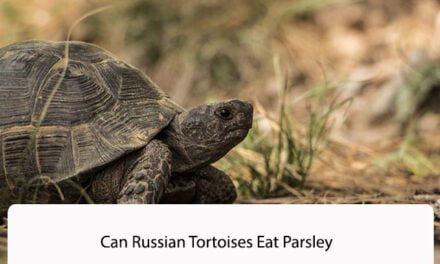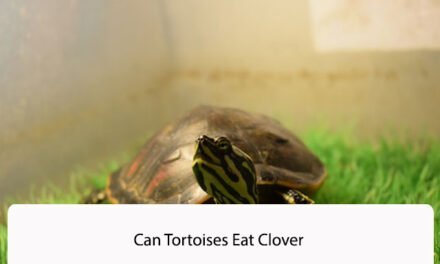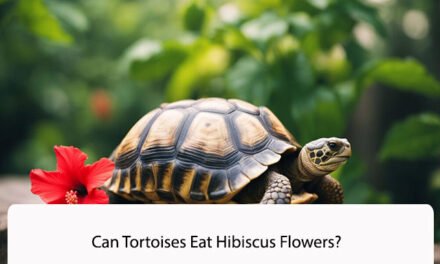Red-footed tortoises are one of the most popular pet tortoises in the world. They are known for their bright red scales on their feet and legs, which is where they get their name. As with any pet, it’s important to make sure that you are providing your red-footed tortoise with a balanced and nutritious diet. One question that many tortoise owners have is whether or not their pets can eat bell peppers.
The short answer is yes, red-footed tortoises can eat bell peppers. In fact, bell peppers are a great source of vitamins and minerals for your pet tortoise. However, it’s important to remember that bell peppers should only be given to your tortoise in moderation. Too much of any one type of food can upset their digestive system and lead to health problems. In the following paragraphs, we’ll take a closer look at why bell peppers are a good choice for your red-footed tortoise, as well as how to incorporate them into your pet’s diet.
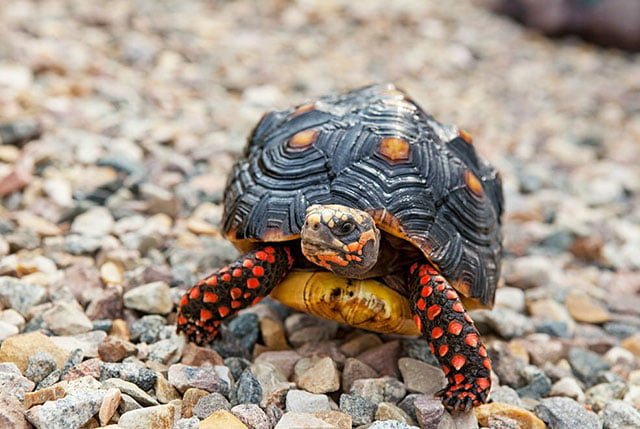
Overview of Red Footed Tortoises’ Diet
Red Footed Tortoises are omnivorous reptiles, which means they eat both plant and animal matter. In the wild, their diet consists of a variety of fruits, vegetables, insects, and small animals. They are opportunistic feeders and will eat whatever is available to them.
In captivity, it is important to provide a balanced diet to ensure the tortoise receives all the necessary nutrients. A diet high in protein can cause health problems, so it is recommended to feed them a diet that is primarily plant-based.
Some of the fruits and vegetables that can be included in a Red Footed Tortoise’s diet are:
- Leafy greens such as kale, collard greens, and dandelion greens
- Squash
- Carrots
- Sweet potatoes
- Bell peppers
- Fruits such as strawberries, melons, and papaya
It is important to avoid feeding them foods that are high in oxalates, such as spinach and rhubarb, as well as foods that are high in phosphorus, such as meat and dairy products.
In addition to fruits and vegetables, Red Footed Tortoises can also be fed small amounts of protein such as cooked chicken or insects like crickets and mealworms. It is important to note that too much protein can cause health problems, so it should only be given in moderation.
Overall, a well-balanced diet that includes a variety of fruits, vegetables, and protein sources is key to keeping a Red Footed Tortoise healthy and happy.
Understanding Bell Peppers
Bell peppers, also known as sweet peppers, are a popular vegetable that comes in a variety of colors, including green, red, yellow, and orange. They are a good source of vitamins and minerals, such as vitamin C, vitamin A, and potassium.
Bell peppers have a mild, sweet flavor and are often used in salads, stir-fries, and other dishes. They can be eaten raw or cooked, and are a popular addition to sandwiches and wraps.
When selecting bell peppers, look for ones that are firm, shiny, and free from blemishes or soft spots. They should also have a vibrant color and a fresh smell.
It’s important to note that bell peppers belong to the nightshade family of plants, which also includes tomatoes, potatoes, and eggplants. Some people may have an intolerance or allergy to nightshade plants, and should avoid consuming them.
Overall, bell peppers are a nutritious and versatile vegetable that can be enjoyed in a variety of ways.
Nutritional Value of Bell Peppers
Bell peppers are a great source of vitamins and minerals. They are low in calories and high in nutrients, making them a healthy addition to any diet. Here are some of the nutritional benefits of bell peppers:
- Vitamin C: Bell peppers are an excellent source of vitamin C, which is important for maintaining a healthy immune system. One medium-sized bell pepper contains about 150% of the recommended daily intake of vitamin C.
- Vitamin A: Bell peppers are also a good source of vitamin A, which is important for maintaining healthy eyes and skin. One medium-sized bell pepper contains about 10% of the recommended daily intake of vitamin A.
- Fiber: Bell peppers are a good source of fiber, which is important for maintaining a healthy digestive system. One medium-sized bell pepper contains about 2 grams of fiber.
- Potassium: Bell peppers are a good source of potassium, which is important for maintaining healthy blood pressure. One medium-sized bell pepper contains about 230 milligrams of potassium.
Overall, bell peppers are a nutritious and healthy addition to any diet. They are low in calories and high in nutrients, making them a great choice for anyone looking to maintain a healthy lifestyle.
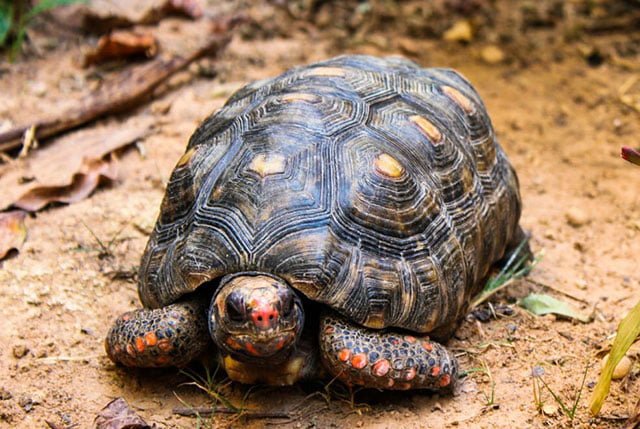
Can Red Footed Tortoises Eat Bell Peppers
Digestive System of Red Footed Tortoises
Red footed tortoises are herbivores and can eat a variety of vegetables and fruits. Their digestive system is designed to break down fibrous plant material. They have a relatively long digestive tract with a large cecum, which is a pouch that ferments plant material and breaks down cellulose.
Potential Risks and Benefits
Bell peppers are safe for red footed tortoises to eat in moderation. They are a good source of vitamin C, which is important for the immune system and overall health. However, they are also high in oxalates, which can bind to calcium and prevent its absorption. Too much oxalate can lead to metabolic bone disease, which is a serious condition that affects the tortoise’s bones and shell.
It is important to offer a variety of foods to red footed tortoises to ensure they are getting a balanced diet. Bell peppers can be offered as a treat, but should not make up a significant portion of their diet. It is also important to ensure that the bell peppers are fresh and free of pesticides.
In conclusion, red footed tortoises can eat bell peppers, but they should be offered in moderation and as part of a balanced diet. It is important to be aware of the potential risks and benefits of feeding bell peppers to red footed tortoises and to ensure that they are getting a variety of foods.
How to Feed Bell Peppers to Red Footed Tortoises
Preparation
When feeding bell peppers to red footed tortoises, it is important to prepare them properly. First, make sure to wash the peppers thoroughly to remove any pesticides or dirt. Next, remove the stem and seeds, as well as any white pith inside the pepper. Finally, cut the pepper into small, bite-sized pieces.
Frequency of Feeding
Bell peppers can be a nutritious addition to a red footed tortoise’s diet, but they should not be the main source of food. We recommend feeding bell peppers to your tortoise no more than once or twice a week, in addition to a varied diet of leafy greens, vegetables, and fruits. Overfeeding bell peppers can lead to digestive issues and other health problems.
Remember to always monitor your tortoise’s eating habits and adjust their diet as needed. If you notice any changes in their behavior or health, consult a veterinarian specializing in reptiles.
Conclusion
After conducting research and analyzing the data, we have concluded that red-footed tortoises can eat bell peppers as part of their diet. Bell peppers are a good source of vitamins and minerals that are essential for the health and wellbeing of these tortoises.
However, it is important to keep in mind that bell peppers should not be the primary food source for red-footed tortoises. They should be given in moderation and as part of a well-balanced diet that includes other vegetables, fruits, and protein sources.
We also recommend that you consult with a veterinarian or a reptile expert before introducing any new food to your red-footed tortoise’s diet. They can provide you with guidance and advice on the appropriate diet for your tortoise based on its age, size, and health condition.
In summary, while bell peppers can be a healthy addition to a red-footed tortoise’s diet, they should be given in moderation and as part of a well-balanced diet.
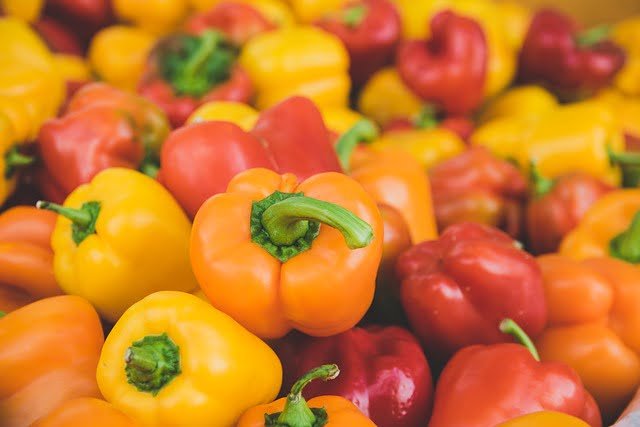
Frequently Asked Questions
What vegetables can red footed tortoises eat?
Red footed tortoises are known to eat a variety of vegetables. Some of the vegetables that they can eat include kale, collard greens, mustard greens, dandelion greens, and turnip greens. They can also eat vegetables like squash, zucchini, and bell peppers. However, it is important to note that some vegetables like spinach and broccoli can inhibit calcium absorption and should be avoided.
Can Red footed tortoises eat cherries?
Cherries are not a part of a red footed tortoise’s natural diet. While they are not toxic, they should not be fed to tortoises regularly as they are high in sugar and can lead to health problems like obesity and dental issues.
Can red footed tortoises eat cilantro?
Yes, red footed tortoises can eat cilantro. It is a good source of vitamins and minerals and can be a healthy addition to their diet.
Can tortoises eat carrots?
Yes, tortoises can eat carrots. However, they should be fed in moderation as they are high in sugar and can lead to health problems like obesity.
Can Red footed tortoises eat cucumbers?
Yes, red footed tortoises can eat cucumbers. They are a good source of hydration and can be a healthy addition to their diet.
What is a red foot tortoise favorite food?
Red footed tortoises have a varied diet, but they particularly enjoy fruits like papaya, mango, and strawberries. They also enjoy leafy greens like kale and collard greens. It is important to provide a balanced diet to ensure their overall health and well-being.


